This final reflection comes in two installments. The first was written back at the beginning of the school year, for unknown reasons I never got back to putting the finishing touches on it. The second part is being added on a snow day four months later. Time has moved quickly, this journal entry will provide a unique, longer term look at what has happened as a result of my PolarTREC work. I hope this provides a perspective for what science can look like, as well as the importance of these experiences for teachers, their students, and community members. As always, send questions or feedback. I will try to check in periodically.
September 1, 2008 Final Reflection #1 This final reflection is being written from the kitchen on Labor Day Weekend. I look back with a smile and a slight ache at the NuvukThe Iñupiaq name for Point Barrow and the people who lived there. Archaeology Project. The long days, the demanding work, the sense of discovery, and the raw beauty of the Arctic have left a lasting impression on me.
The goals for the project were to participate in an archaeology project, learn about the Arctic and share my discoveries with people via the PolarTREC website. I have achieved those goals and much more. Writing and photography are new found passions, an appreciation for native people, their culture, and their wisdom were reinforced, and lastly, I realized how important it is to manage people well.
Lessons from long ago were also remembered. My parents taught all of us how to work hard and do the job right. At each step of this adventure, I made sure I was doing the best I could, putting in everything I had. As always, it made a difference.
I appreciate the struggles students face when asked to do something they have never tried before. The process of learning new knowledge or skills is slightly unsettling. Faced with a variety of new tasks and expectations, I asked lots of questions, took notes, and learned quickly from a very understanding group of "teachers”. Thanks everyone for all the help!!
January 7, 2009/ January 28, 2009 Final Reflection #2 Snow falls again, there is 3 feet of it out in the yard now. I am reminded of the mid-summer snowstorm I encountered in Barrow, AK. I then think that Baroow must be even colder now, and still in 24 hours of darkness or twilight. Maybe the last cold snap that brought temperatures here down to -15F compare to Barrow. Needless to say, a shiver moves up my spine.
*8 Presentations Done, 2 More in the Works *Fall of 2008 has been very busy for me as well as for my students. Eight PolarTREC presentations have taken me from my backyard; the "drive in movie” presentation, out to the shores of Lake Ontario in western New York. The powerpoint presentation with pictures and images from Barrow and NuvukThe Iñupiaq name for Point Barrow and the people who lived there. has opened people’s eyes to the wonders of archaeology, science, and life in the Arctic. A common question has been, "What has kept the native people living there for so long?” I wish I had asked that question directly to some of the Barrow natives, but I didn’t, so I do not have a specific answer. From all I have gathered though, the people of Barrow, and I am assuming the people who lived out at NuvukThe Iñupiaq name for Point Barrow and the people who lived there., simply love living where they do. They need the varied weather, the hearty people, the ever-changing ocean, the wide-open tundra, and the all the other little things that make their community special. I smile as I think of the challenges they face, because I know that they think it is far more difficult to live in big cities like Las Vegas or even out in the rolling hill country of Vermont.
*Archaeology Dig at Chester-Andover Elementary School *Back in November of 2007, two classes of fifth and sixth graders put a variety of objects into the ground to see what would happen over the course of one year. This simplistic experiment turned into our first annual Archaeological Expedition! My co-teacher, Toby Treu, and I brought our classes out on a cold November day to see if we could find what was placed in the ground last year. Our map making skills were not great back then, and our memories were a little off too. Discoveries were made instantly though. Beads, broken pens, red plastic string, and other objects were found right away. These were not items we had placed out there last year, these were new finds!! Mrs. Treu’s class thought they were in the right place when they started excavating. Bricks, sewer tile, wire, and nails were found though instead of the objects they had been searching for. Lots of excavating, brushing, and cleaning allowed us to closely examine these "artifacts”.
The pictures below are from our archaeology this fall and early winter.
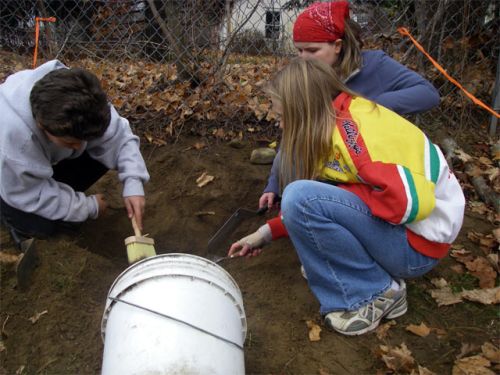
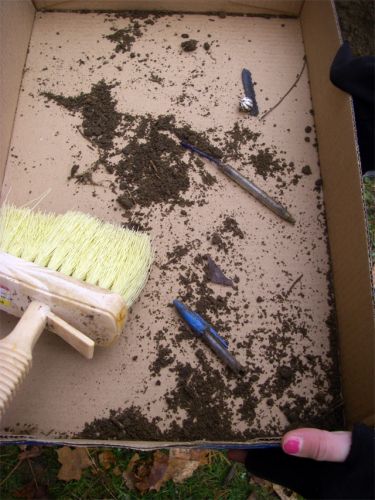
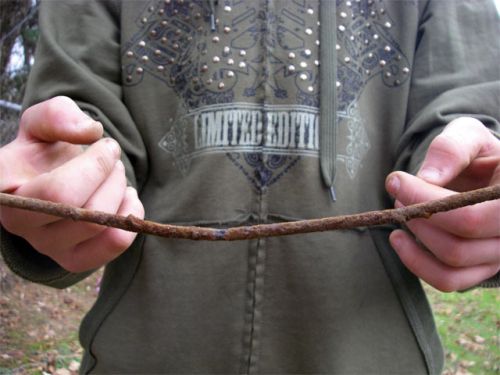
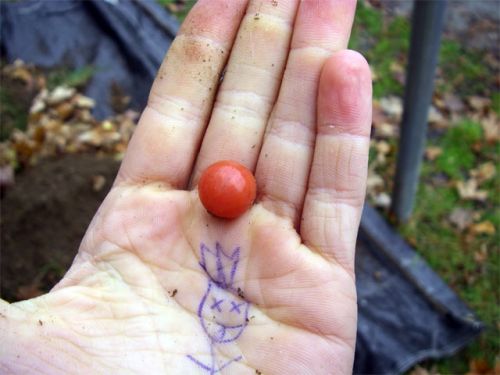
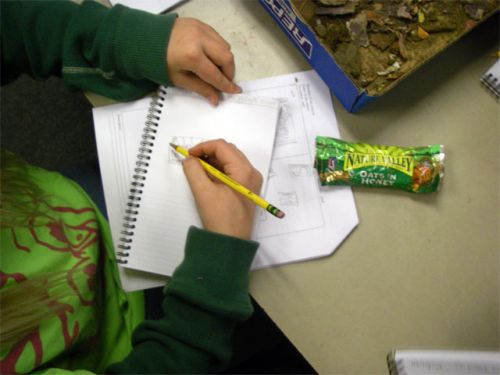
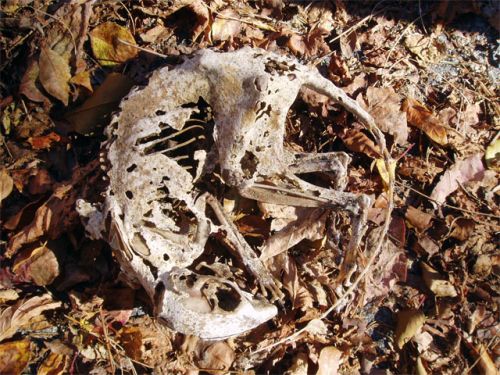
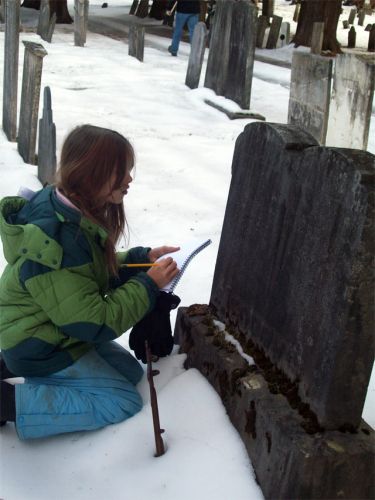
Science is far more for these students now that they have scraped, brushed, examined, sketched, and catalogued the artifacts they excavated. They see science as a chance to explore, a process that is open ended, and a chance to get outside and get dirty. They also discovered that they are scientists. Looking back, that is exactly what I had hoped would happen!!
In conclusion, I need to extend a huge, warm hug, high five, and a toast to a whole bunch of people. First up are all the wonderful, talented, and creative folks at PolarTREC/ ARCUS. Janet and Kristin ran got the ball rolling and I ran with it. Audio files, photo management, uploads, and Live from IPY events came together without a hitch. These folks, too many to mention, know their stuff and do a phenomenal job putting teachers together with scientists. You all rock the polar regions!!
The NuvukThe Iñupiaq name for Point Barrow and the people who lived there. Archaeology Project: Anne, Laura, Dave, Tony, Krista, Christine, Owen, and Claire, all took the time to explain the intricacies of arctic archaeology to a rookie. I soaked up so much incredible knowledge watching you!! I also reinforced my critical science skills; observing, sketching, hypothesizing, and shoveling! Who would have thought science involved so much shoveling! All the while, you help me navigate the challenges of being away from home, eating industrial food, and figuring out how I fit into this complex web of students/ scientists/ and teacher. Needless to say, you are wonderful. I appreciate all your help and support.
Barrowites, you folks are amazing! Each of you knows your culture, your environment, and your archaeology. I hope you continue to explore the North Slope as well as the wider reaches of the world. Other people need to hear your stories.
Big green thanks go out to the Vermonters that kept the garden growing, the weeds in check, and the family happy. Huge hugs, as always, for Jeff, Wendy, and Bill who were always there when needed; spring, summer, winter, and fall!! Special hugs and tender kisses for my wife, Julie, and daughter, Marina, who played, laughed, swam, and took such good care of each other while I was away. You were never far from my thoughts, and I slept better knowing that you were both in good hands.
Lastly, I thank the National Science Foundation, Chester-Andover Elementary School, my co-teacher, Toby Treu, and all the students of CAES for their willingness to try anything. I appreciate the opportunity to share my experience with so many different schools. A few dates are still open so if you know of a group of excitable students (or adults) just send me a note. All the best!! Happy Digging!!
- < prev
- 43 of 43


Comments